The stars of Enlil occupied the region in the
north:
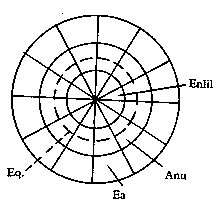
On Hawaii the basic idea was the same:
... Take the lower
part of a gourd or hula drum, rounded as a wheel (globe),
on which several lines are to be marked and burned in, as
described hereafter. These lines are called na alanui o na
hoku hookele, the highways of the navigation stars, which
stars are also called na hoku ai-aina, the stars which
rule the land. Stars lying outside these three lines are called
na hoku a ka lewa, foreign, strange, or outside stars
...
... three lines are
drawn east and west, one across the northern section indicates
the northern limit of the Sun (corresponding with the Tropic of
Cancer) about the 15th and 16th days of the month Kaulua
(i.e., the 21st or 22nd of June) and is called ke alanui
polohiwa a Kane, the black-shining road of Kane. The
line across the southern section indicates the southern limit of
the Sun about the 15th or 16th days of the month Hilinama
(December 22) and is called ke alanui polohiwa a Kanaloa,
the black-shining road of Kanaloa. The line exactly
around the middle of the sphere is called ke alanui a ke
ku'uku'u, the road of the spider, and also ke alanui i ka
Piko a Wakea, the way to the navel of Wakea (the
Sky-father)
...
The beginning of the list of 33 stars on the path
of
Enlil was up at the north pole, at Draco - at the Plough:

|
33 Northern stars on the Path
of Enlil |
|
Plough |
Enlil,
the lead star of the stars of Enlil (Most
of Draco) |
1 |
|
Wolf |
At the seed funnel of the Plough
(Head & middle of Draco) |
2 |
|
Old Man |
Enmesharra
(Perseus) |
3 |
|
Crook |
The Crouching god
(Auriga) |
4 |
|
Great Twins |
Lugalirra
and Meslamtaea
(Gemini) |
5-6 |
|
Little Twins |
Alammush
and Ninezengud
(Canis Minor) |
7-8 |
|
Crab |
The seat of Anu (Cancer) |
9 |
|
Lion |
Latarak
(Leo) |
10 |
|
23 stars on the Central Path
of Anu |
|
Field |
The seat of
Ea,
which leads the stars of
Anu
(4 stars of the Square of Pegasus) |
4 |
|
The star at the Field
(head and neck of Pegasus, and western fish in
Pisces) |
Swallow |
5 |
|
The star behind the Field
(northern fish in Pisces) |
Anunitum |
6 |
|
The star behind
it (Dumuzi or Aries) |
Hired Man |
7 |
|
Star Cluster |
The
Seven Gods, the great gods (Pleiades) |
8 |
|
Bull of Heaven |
The Bull's Jaw, the Crown of Anu
(Taurus, or at least its head) |
9 |
|
True Shepherd of Anu |
Papsukal,
the messenger of Anu and Ishtar
(Orion) |
10 |
|
The Twins opposite the True Shepherd of
Anu
(Cetus and a part of Eridanus) |
Lulal & Latarak |
11, 12 |
|
The star behind him
(Lepus) |
Rooster |
13 |
|
Arrow |
Arrow of the great god Ninurta
(Sirius and probably other stars in Canis
Major) |
14 |
|
Bow |
Elamite Ishtar, the daughter of Anu
(Puppis) |
15 |
|
Serpent |
Ningishzida,
lord of the Underworld
(Hydra) |
16 |
|
15
Southern stars on the Path of Ea |
|
Fish |
The lead star of the stars of
Ea (Fomalhaut) |
1 |
|
Great One |
Ea
(Aquarius) |
2 |
|
Eridu |
Ea (Vela) |
3 |
|
Ninmah |
The star to his right (Vela) |
4 |
33 (stars in the north) + 15 (stars in the
south) = 48 as in the number of right ascension hours in 2 days.
"Ptolemy scientifically followed with those
now known as the ancient forty-eight, in the 7th and 8th
books of the Syntaxis, twelve of the zodiac with twenty-one
northern and fifteen southern, made up by 1028 stars,
including 102 αμόρφωτοι,
all probably from Hipparchos, although with some
acknowledged alterations by himself ..." (Allen)
|
Ptolemaios: |
|
zodiac |
12 |
|
north |
21 |
36 |
|
south |
15 |
| |
48 |
|
Enuma (or Ea), Anu, Enlil series: |
|
Anu |
23 |
|
Enlil |
33 |
48 |
|
Ea (Enuma) |
15 |
| |
71 (= 26000 / 366) |
The birth of First Father in June 16, 3122
B.C. could evidently have corresponded to the time when the
Sun reached the Tropic of Cancer (ke
alanui polohiwa a Kane, the black-shining road of
Kane).
... three lines
are drawn east and west, one across the northern section
indicates the northern limit of the Sun (corresponding with
the Tropic of Cancer) about the 15th and 16th days of the
month Kaulua (i.e., the 21st or 22nd of June) and is
called ke alanui polohiwa a Kane, the black-shining
road of Kane ...
The first day in the month
Kaulua (Tau-rua) ought to
have been in June 6 (= 21 - 15). The month
of Father Light - Jus-piter (Jupiter) or Tane
(Kane) - appears to be
in June.
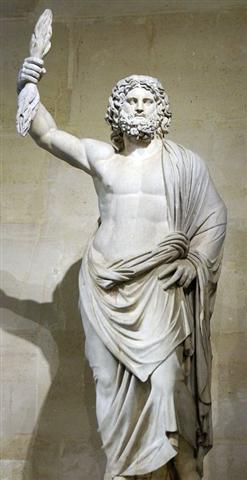
... Midsummer is
the flowering season of the oak, which is the tree of
endurance and triumph, and like the ash is said to 'court
the lightning flash'. Its roots are believed to extend as
deep underground as its branches rise in the air - Virgil
mentions this - which makes it emblematic of a god whose law
runs both in Heaven and in the Underworld ... The month,
which takes its name from Juppiter the oak-god, begins on
June 10th and ends of July 7th. Midway comes St. John's Day,
June 24th, the day on which the oak-king was sacrificially
burned alive. The Celtic year was divided into two halves
with the second half beginning in July, apparently after a
seven-day wake, or funeral feast, in the oak-king's honour
...
|
Defeat of
Seven Macaw |
May 28, 3149 B.C. |
12.18.4.5.0 1 Ahaw 3 K'ank'in |
|
Birth of First Father |
June 16, 3122 B.C. |
12.19.11.13.0 1 Ahaw 8 Muwan |
|
Birth of First Mother |
December 7, 3121 B.C. |
12.19.13.4.0 8 Ahaw 18 Tz'ek |
|
Creation |
August 13, 3114 B.C. |
4 Ahaw
8 Kumk'u |
|
Ahau. To blow freshly, coolness, zephyr,
salubrious, breeze, wind; ahau ora,
agreeable breeze.
Hau, to blow, blusterous, to breathe. |

hau ia
Ba2-11 |
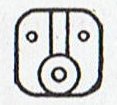
Ahau (Ahaw) |
We can guess the
astronomers had put Kau-lua 1 (Maro 6)
at heliacal φ Gemini because anciently, at
the time when Bharani was at 0h, its day number
would have
been 157 (= 314 / 2). A quarter of 472 (16 lunar
synodic months) nights was 118 nights and at the
time of rongorongo the right
ascension position of φ Gemini was *118:
|
8 MAY (*48) |
9 |
10 (130) |
11 |
12 |
13 |
|
*MAY 10 |
11 |
12 (*52) |
13 |
14 |
15 (135) |
|
MAY 14 (*54) |
15 |
16 (136) |
17 |
18 |
19 |
 |
 |
 |
 |
 |
 |
|
Ga2-24 |
Ga2-25 |
Ga2-26 |
Ga2-27 |
Ga2-28 |
Ga2-29 (59) |
|
φ Gemini
(118.4) |
DRUS
= χ Carinae (119.9) |
ω Cancri (120.2) |
8h (121.7)
χ Gemini
(121.0),
NAOS = ζ Puppis
(121.3) |
ρ Puppis (122.0),
HEAP OF FUEL
= μ Cancri (122.1), ζ Monocerotis
(122.3), ψ Cancri (122.6),
REGOR (Roger reversed)
= γ Velorum (122.7) |
TEGMINE (Covered Up) = ζ Cancri
(123.3) |
|
July 17 (*118) |
18 |
19 (200) |
20 |
21 |
22 / 7 |
|
"June 6 (157) |
7 |
Kaulua
3 |
9 (*80) |
Maro 10 |
11 |
|
ι Sagittarii
(301.2),
TEREBELLUM = ω Sagittarii, ξ
Aquilae (301.3),
ALSHAIN (Falcon) = β
Aquilae (301.6), φ Aquilae (301.8) |
ε Pavonis, θ
Sagittarii (302.3), γ Sagittae (302.5),
μ Pavonis (302.7) |
τ Aquilae
(303.8) |
20h (304.4)
η
Sagittae (304.2), δ Pavonis (304.4) |
SHANG WEI
(Higher Guard) = κ Cephei
(305.2), θ Sagittae (305.4),
TSEEN FOO (Heavenly Raft) =
θ Aquilae (Ant.) (305.6), ξ Capricorni
(305.8) |
TSO KE (Left
Flag) = ρ Aquilae (306.3) |
|
January 16 |
17 |
18 (383) |
19 |
20 |
21 |
|
"December 6 |
7 |
8 |
9 |
10 (344) |
11 (*265) |
|
NOVEMBER 13 |
14 |
15 |
16 (320) |
17 |
18 (*242) |
|
*NOVEMBER 9 |
10 (314) |
11 |
12 (*236) |
13 |
14 |
|
7 NOVEMBER |
8 |
9 |
10 (314) |
11 |
12 (*236) |
|
Egyptian bread, (-t, female
determinant) |
 |
Phoenician qoph |
 |
Greek
phi |
Φ(φ) |
|
...
is the 21st letter of the Greek
alphabet ... Its origin is uncertain
but it may be that phi originated as
the letter qoppa ... In traditional
Greek numerals, phi has a value of
500 or 500000 ...
Isaac Taylor,
History of the Alphabet: Semitic
Alphabets, Part 1, 2003: 'The
old explanation, which has again
been revived by Halévy, is that it
denotes an 'ape,' the character Q
being taken to represent an ape with
its tail hanging down. It may also
be referred to a Talmudic root which
would signify an 'aperture' of some
kind, as the 'eye of a needle,' ...
Lenormant adopts the more usual
explanation that the word means a
'knot' ...
... The king, wearing now a short,
stiff archaic mantle, walks in a
grave and stately manner to the
sanctuary of the wolf-god Upwaut,
the 'Opener of the Way', where he
anoints the sacred standard and,
preceded by this, marches to the
palace chapel, into which he
disappears. A period of time elapses
during which the pharaoh is no
longer manifest.

When he reappears he is clothed as
in the Narmer palette, wearing the
kilt with Hathor belt and
bull's tail attatched. In his right
hand he holds the flail scepter and
in his left, instead of the usual
crook of the Good Shepherd, an
object resembling a small scroll,
called the Will, the House Document,
or Secret of the Two Partners, which
he exhibits in triumph, proclaiming
to all in attendance that it was
given him by his dead father
Osiris, in the presence of the
earth-god Geb. 'I have run',
he cries, 'holding the Secret of the
Two Partners, the Will that my
father has given me before Geb.
I have passed through the land and
touched the four sides of it. I
traverse it as I desire.' ... |

On Hawaii the Tropic of Capricorn was marked
as a line for ke alanui polohiwa a Kanaloa,
the black-shining road of Kanaloa
(Tagaroa), and the date given -
'about the 15th or
16th days of the month Hilinama
(December 22)' - ought to be half a year later than
Kaulua 16
(probably corresponding to
Maro 21 - or
"June 21 -
on Easter Island).
|
14 MAY |
15 |
16 (136) |
17 |
18 (*58) |
|
*MAY 16 (136) |
17 |
18 |
19 |
20 (*60) |
|
MAY 20 (140) |
21 |
22 |
23 |
(*64 = *128 / 2) |
 |
 |
 |
 |
 |
|
Ga3-1 |
Ga3-2 |
Ga3-3 |
Ga3-4
(63) |
Ga3-5 |
|
AL TARF (The End)
= β Cancri (124.3)
RAS
ALGETHI (α Herculis)
|
χ Cancri (125.2),
BRIGHT FIRE
= λ Cancri (125.4) |
AVIOR
= ε Carinae (126.4), φ Cancri
(126.8) |
ο Ursa Majoris (127.4) |
Pushya-8
υ Cancri (128.1),
θ CANCRI
(128.2) |
|
July 23 (204) |
24 (*125) |
25 |
26 |
27 (208) |
|
°July 19 (200) |
20 (*121) |
21 |
22 / 7 |
23 (204) |
|
'June
26 (177) |
27 |
28 |
29 (*100) |
SIRIUS |
|
"June 12 (163) |
13 (*84) |
14
(165) |
Maro 15 |
Kaulua 11 |
|
GREDI
(Goat) = α Capricorni
(307.2),
σ Capricorni (307.5),
ALSHAT (The
Sheep - to be slaughtered)
= ν Capricorni (307.9) |
Al Sa’d al Dhabih-20 (The
Lucky One of the Slaughterers) /
Ox / Herd Boy-9 (Buffalo)
DABIH
= β Capricorni (308.0), κ Sagittarii
(308.1),
SADIR
(Breast)
= γ Cygni (308.4),
PEACOCK = α Pavonis
(308.7) |
KHUFU
MINTAKA
(δ Orionis)
|
KHAFRE
ALNILAM
(ε Orionis)
|
MENKAURE
ALNILAK
(ζ Orionis)
|
|
OKUL
= π Capricorni (309.6),
BOS
= ρ Capricorni (309.9)
ARNEB (α
Leporis)
|
ο
Capricorni (310.2), θ Cephei (310.5)
HEKA (λ
Orionis)
|
ROTTEN
MELON = ε Delphini, φ
Pavonis (311.2), η Delphini (311.4),
ζ Delphini, ρ Pavonis (311.7)
PHAKT (α
Columbae)
|
|
January 22 (387) |
23 |
24 (*309) |
25 (390) |
26 |
|
°January 18 (384) |
19 |
20 (385) |
21 (*306) |
22 |
|
'December 26 (360) |
27 |
28 |
29 (363) |
30 (*284) |
|
"December 12 |
13 |
14 (348) |
15 |
16 (*270) |
|
NOVEMBER 19 |
20 (316) |
21 |
22 (*246) |
23 |
|
*NOVEMBER 15 |
16 (320) |
17 |
18
(*242) |
19 |
|
13 NOVEMBER |
14 (318) |
15 |
16 (*240) |
17 |
|
MAY
25 (290 / 2) |
26 (*66) |
27 |
28 |
 |
 |
 |
 |
|
Ga3-6 |
Ga3-7 |
Ga3-8 |
Ga3-9 (68) |
|
Āshleshā-9 /
Willow-24 (Stag)
π¹ Ursa Majoris,
δ Hydrae (129.6),
AL MINHAR AL SHUJĀ
= σ Hydrae,
MUSEIDA
= π² Ursae Majoris
(129.9)
RAS
ALHAGUE (α Ophiuchi)
|
Al Nathrah-6
BEEHIVE
= ε
Cancri,
η Pyxidis
(130.4),
XESTUS
= ο Velorum
(130.5),
ζ Pyxidis
(130.7),
ASCELLUS BOREALIS
= γ Cancri,
β Pyxidis
(130.9) |
Extended Net-26a /
Arkū-sha-nangaru-sha-shūtu-12
(Southeast Star in the Crab)
η Hydrae
(131.0),
ASCELLUS AUSTRALIS
= δ Cancri
(131.4),
KOO SHE (Bow and Arrow)
= δ Velorum
(131.6),
α Pyxidis
(131.8), ε Hydrae
(131.9) |
ι
Cancri (132.0),
ρ Hydrae
(132.4) |
|
July 28 |
29 (*130) |
30 |
31 (212) |
|
°July 24 |
25 |
26 (*127) |
27 (208) |
|
'July 1 |
2 |
3 (*104) |
4 (185) |
|
"June 17 |
18 |
19 (*90) |
20 (171) |
|
NAKSHATRA DATES: |
|
NOVEMBER 24 |
25 |
26 (*250) |
27
(331) |
|
ROTANEV
= β Delphini, ι Delphini (312.3), τ
Capricorni (312.6), κ Delphini
(312.7),
SVALOCIN = α Delphini, υ
Capricorni, υ Pavonis (312.8) |
μ², μ¹
Oct. (313.2),
DENEB CYGNI =
α Cygni (313.5), β
Pavonis (313.6), δ Delphini (313.8) |
Al
Sa’d al Bula'-21 /
Dhanishta-24 / Girl-10 (Bat)
YUE
(Battle-Axe) = ψ
Capricorni (314.3),
GIENAH
CYGNI = ε Cygni, η Cephei
(314.5), γ Delphini (314.6), σ
Pavonis (314.7),
ALBALI
= ε Aquarii (314.8)
BETELGEUZE (α Orionis)
|
BATEN
ALGIEDI = ω Capricorni
(315.8) |
|
January 27 (392) |
28 |
29 (*314) |
30 |
|
°January 23 |
24 |
25
(*310) |
26 |
|
'December 31 |
'January 1 |
2 |
3 (*288) |
|
"December 17 |
18 |
19 (*273) |
20 (354) |
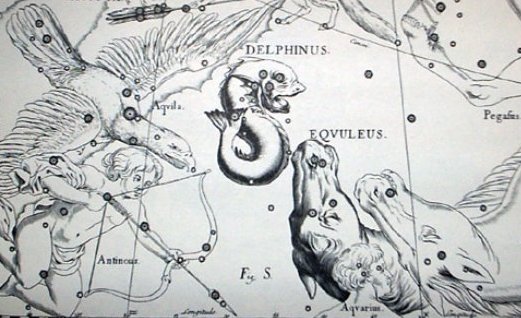
|
MAY 29 |
30 (150) |
31
(*71) |
JUNE 1 |
2 |
3 |
4 |
 |
 |
 |
 |
 |
 |
 |
|
Ga3-10 |
Ga3-11 |
Ga3-12 |
Ga3-13 (72) |
Ga3-14 |
Ga3-15 |
Ga3-16 |
|
γ Pyxidis
(133.6) |
ζ Hydrae (134.1), ρ Cancri (134.2),
ζ Oct. (134.3), ο Cancri (134.6),
δ Pyxidis
(134.9) |
ACUBENS = α Cancri,
TALITHA
BOREALIS
= ι Ursae Majoris
(135.0), σ Cancri (135.2), ρ Ursa
Majoris (135.6) |
ν Cancri (136.0),
TALITHA AUSTRALIS
= κ Ursae Majoris (136.1), ω
Hydrae (136.8) |
9h (137.0)
σ¹ Ursa Majoris (137.0), κ Cancri
(137.3), τ Cancri (137.4),
ALSUHAIL
= λ Velorum (137.5), σ² Ursa Majoris
(137.6), τ Ursa Majoris (137.7), ξ
Cancri (137.8) |
κ Pyxidis (138.0), ε Pyxidis (138.5) |
π Cancri (139.2),
MIAPLACIDUS
= β Carinae (139.3),
TUREIS
= ι Carinae (139.8) |
|
August 1 |
2 |
3 (*500) |
4 (216) |
5 |
6 |
7 |
|
°July 28 |
29 (*130) |
30 |
31 |
°August 1 |
2 (214) |
3 |
|
'July 5 |
6 (*107) |
7 |
8 |
9 (190) |
10 |
11 |
|
Kaulua 16 |
Kaulua 17 |
"June 23 |
ST JOHN'S DAY |
Maro
25 |
26 (177) |
27 |
|
NAKSHATRA DATES: |
|
NOVEMBER 28 |
29 |
30 (*254) |
DECEMBER 1 |
2 (336) |
3 |
4 |
|
μ
Aquarii (316.0) |
ε
Equulei (317.8) |
no star
listed (318) |
21h
(319.6)
ARMUS
= η Capricorni (319.0),
DORSUM
= θ Capricorni (319.3),
TSOO
= 24 Capricorni (319.7) |
DRAMASA
= σ Oct., χ Capricorni (320.0), ν
Aquarii (320.3), γ Equulei (320.6),
ο Pavonis (320.8) |
α Oct.
(321.5), δ Equulei (321.7), φ
Capricorni (321.8) |
KITALPHA = α
Equulei (322.0),
ALDERAMIN =
α Cephei (322.9) |
|
January 31 (396) |
February 1 (32) |
2 |
3 |
4 (400) |
5 |
6 |
|
°January 27 |
28 |
29 (*314) |
30 |
31 (396) |
°February 1 |
2 |
|
'January
4 |
5 (*290) |
6 |
7 (372) |
8 |
9 |
10 |
|
Hilinama 15 |
Hilinama 16 |
"December 23 |
X-MAS EVE |
25 |
26 (360) |
27 |
In Ga3-10 the element in
front is a variant of the hau tea
type of glyph which exhibits a 'face' (mata)
also at its back side, a sign which probably was
used as a way to convey the idea of Janus -
where a dark cycle ended and a new cycle of
light was born.

... Duir as the god of the oak month looks
both ways because his post is at the turn of
the year; which identifies him with the
Oak-god Hercules who became the door-keeper
of the Gods after his death. He is probably
also to be identified with the British god
Llyr of Lludd or Nudd, a god of the sea -
i.e. a god of a sea-faring Bronze Age people
- who was the 'father' of Creiddylad
(Cordelia) an aspect of the White Goddess;
for according to Geoffrey of Monmouth the
grave of Llyr at Leicester was in a vault
built in honour of Janus. Geoffrey writes:
Cordelia obtaining the government of the
Kingdom buried her father in a certain vault
which she ordered to be made for him under
the river Sore in Leicester (Leircester) and
which had been built originally under the
ground in honour of the god Janus.
And here all the workmen of the city, upon
the anniversary solemnity of that festival,
used to begin their yearly labours.
Since Llyr was a pre-Roman God this amounts
to saying that he was two-headed, like
Janus, and the patron of the New Year; but
the Celtic year began in the summer, not in
the winter. Geoffrey does not date the
mourning festival but it is likely to have
originally taken place at the end of June
... What I take for a reference to Llyr as
Janus occurs in the closing paragraph of
Merlin's prophecy to the heathen King
Vortigern and his Druids, recorded by
Geoffrey
of Monmouth:
After this Janus shall never have priests
again. His door will be shut and remain
concealed in Ariadne's crannies.
In other words, the ancient Druidic religion
based on the oak-cult will be swept away by
Christianity and the door - the god Llyr -
will languish forgotten in the Castle of
Arianrhod, the Corona Borealis. This
helps us to understand the relationship at
Rome of Janus and the White Goddess Cardea
who is ... the Goddess of Hinges who came to
Rome from Alba Longa. She was the hinge on
which the year swung - the ancient Latin,
not the Etruscan year - and her importance
as such is recorded in the Latin adjective
cardinalis - as we say in English 'of
cardinal importance - which was also applied
to the four main winds; for winds were
considered as under the sole direction of
the Great Goddess until Classical times
...
 |
 |
 |
 |
|
Ga3-10 |
hau tea |
hau ia |
Ahau (Ahaw) |
The term hau tea
was
frequently
used by Metoro and evidently it was referring to
white light in the sky:
|
Tea 1.
Light, fair, whitish. 2. To rise (of
the moon, the stars); ku-tea-á te
hetu'u ahiahi, the evening star
has risen. Vanaga.
1. To shine, be
bright, brilliant, white; tea
niho, enamel of the teeth;
ata tea, dawn; teatea,
white, blond, pale, colorless,
invalid; rauoho teatea, red
hair; hakateatea, to blanch,
to bleach. P Pau.: faatea, to
clear, to brighten. Mgv.: tea,
white, blanched, pale. Mq.: tea,
white, clear, pure, limpid. Ta.:
tea, white, brilliant. 2. Proud,
vain, haughty, arrogance, to boast;
tae tea, humble; teatea,
arrogant, bragging, pompous,
ostentatious, to boast, to show off,
haughty; hakateatea, to show
off. Mgv.: akateatea, pride,
vanity, ostentatious, to be puffed
up. Ta.: teoteo, boastful,
proud, haughty. 3. Mgv.: teatea,
heavy rain. Ha.: kea, the
rain at Hana and Koolau.
Churchill.
1. White, clear;
fair-complexioned person, often
favorites at court; shiny, white
mother-of-pearl shell, cfr.
keakea, kekea, Mauna
Kea. Po'o kea, towhead,
gray-haired person. One kea,
white sand (this is shortened to
ōkea or kea, as in the
expression kea pili mai,
drift gravel - vagabond). (PPN
tea). 2. Breast milk. See
Nu'a-kea. 3. A variety of sugar
cane, among Hawaiians one of the
best-known and most-used canes,
especially in medicine: clumps
erect, dense, of medium height; pith
white. Ua ola ā 'ō kō kea,
living until kea cane tassels
(until the hair turns gray). 4. Name
listed by Hillebrand for kolomona
(Mezoneuron kavaiense); see
uhiuhi. Wehewehe.
|
|
KEA. adj. Haw., also
keo, keo-keo, white,
lucid, clear; a-kea, openly,
public; au-akea, at noon,
midday. Sam.: tea-tea-vale,
be pale; ao-atea, forenoon;
atea-tea, wide, spacious.
Tah.: tea, white; teo-teo,
pride, haughtiness; atea,
clear, distinct, far off. Marqu.,
tea, atea, white, broad
daylight, also name of the principal
god; light generally, as opposed to
darkness.
Fiji., cea-cea, pale,
deathlike; cecea, daybreak,
light of morning. Malg., tziok,
brilliant, snowwhite. Ceram (Mahai),
teen, a star. Greek, θεος,
m. θεα,
f. god, goddess, divinity generally.
In Greek,
θεος
signified no god in particular, but
was applied ot almost all the gods,
though perhaps more often to the
sun. As the first gods were the sun,
moon, &c., their brilliancy and
whiteness were the underlying sense
of the names given them. That
primary sense was apparently lost in
the Greek and the other West Aryan
branches, though in the Polynesian
both the primary and derivative
sense has been preserved, ans in the
Marqu. atea,
both god and light, in the Tah.
tapu-tea,
the rainbow, and the Sam.
tapu-i-tea,
the evening star... |
|
Atea The
name of the district or section of
country over which Olopana is
to have ruled in Kahiki was
in Hawaiian Moa-ula-nui-akea.
Analyzing this word, it consists of
one appellative, Moa, and
three adjectives or epithets, ula,
nui, akea, 'red,
great, open, or wide-spreading' ...
(Fornander)
Pau.: fakaatea,
to remove, to put away. Ta.: atea,
clear. Mq.: atea, id. Sa.:
ateatea, wide, spacious. Ma.:
atea, clear. Churchill. |
The Hawaiian Sky-father was
named Wakea and this word
was obviously related to akea (atea).
... The Hawaiian day was divided in three
general parts, like that of the early Greeks
and Latins, - morning, noon, and afternoon -
Kakahi-aka, breaking the shadows,
scil. of night; Awakea, for
Ao-akea, the plain full day; and
Auina-la, the decline of the day.
The lapse of the night, however, was noted
by five stations, if I may say so, and four
intervals of time, viz.: (1.) Kihi,
at 6 P.M., or about sunset; (2.) Pili,
between sunset and midnight; (3) Kau,
indicating midnight; (4.) Pilipuka,
between midnight and surise, or about 3
A.M.; (5.) Kihipuka, corresponding to
sunrise, or about 6 A.M. ...
...
Atea then became the wife of
Rua-tupua-nui, Source of Great Growth,
and they became the parents of all the
celestial beings, first the shooting stars,
then the Moon and the Sun, next the comets,
then the multitude of stars and
constellations, and finally the bright and
dark nebulae. When this tremendous task had
been accomplished Atea took a third
husband, Fa'a-hotu, Make Fruitful.
Then occurred a curious event. Whether
Atea had wearied of bringing forth
offspring we are not told, but certain it is
that Atea and her husband
Fa'a-hotu exchanged sexes. Then the eyes
of Atea glanced down at those of his
wife Hotu and they begat Ru.
It was this Ru who explored the whole
earth and divided it into north, south,
east, and west
...
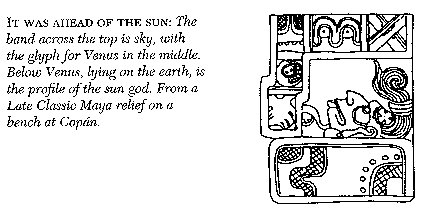
Manu kake (climbing
'bird') is the name used by Metoro for a
type of glyph which exhibits the basic
characteristics of Janus:
 |
 |
|
manu kake |
Ga3-1 |
|
Kake
Kakea, to come near, to embark.
P Pau.: kake, to climb, to
ascend. Mgv.: kake, the
arrival of shoals of spawning fish.
Mq.: kake, to climb up a
valley. Ta.: ae, to climb, to
ascend. Churchill. Mgv.: kake,
to strike on an ocean reef. Ta.:
ae, to strand. Churchill.
Sa.: a'e,
upward, to go up; sa'e, to
elevate one leg, as in the act of
falling in a club match; 'a'e,
to ascend, to rise. To.: hake,
upward, to ascend. Fu.: ake,
up, to ascend; sake, ro raise
the leg at one in derision or
mockery; kake, to climb, to
ascend. Niuē:
hake,
up, going up. Uvea: ake,
up; kake,
to go up. Ma.: ake,
upward; kake,
to climb, to ascend. Mq.:
ake,
on high, upward; kake,
to ascend. Mgv.: ake,
upward. Bukabuka: ake,
up. Ta.: ae,
up, to go up, to ascend, to climb.
Ha.: ae,
to raise, to lift up, to mount.
Fotuna: no-jikijiake,
to lift up; no-tukake,
to stand upright. Nukuoro:
kake,
to go up. Nuguria: kake,
up; hanage,
northwest. Rapanui: kake a,
to go abroad. Vi.: thake,
upward; thaketa,
to dig or lift up. Churchill 2. |
... There was once an Indian who was married
and the father of a boy and a girl. The
Trickster, who wanted to appropriate his
fine garments and his wife, persuaded him to
go and fetch eaglets from the top of a high
peak. The Indian took off his clothing and
started to climb up the cliff, which he
found quite an easy task, since the way to
the nest was like a stairway. But the
Trickster commanded that the peak increase
in height. He made the sides completely
smooth so that the Indian was unable to come
back
down and remained stranded at the top
...
... Several of the early
missionaries comment with a fine sense of
humor upon the mistake the islanders made in
calling the cow when first seen a bird. This
is the word which led the good missionaries
into the error of their own ignorance.
Manu
is as wholesale in its signification as our
word animal, it is generic. In the paucity
of brute mammalia the first missionaries
found this general term most frequently used
of birds, and it was their and not a
Polynesian mistake to translate manu
into bird. In the material here collected it
will be seen that the significations animal
and bird are widely extended. In the
Paumotu insects are included; the same
is true of Mota, where manu
signifies beetle as well as bird. Nor is its
applicability restricted to earth and air;
it reaches into the sea as well. Samoa uses
i'amanu (fish-animal) for the whale
...
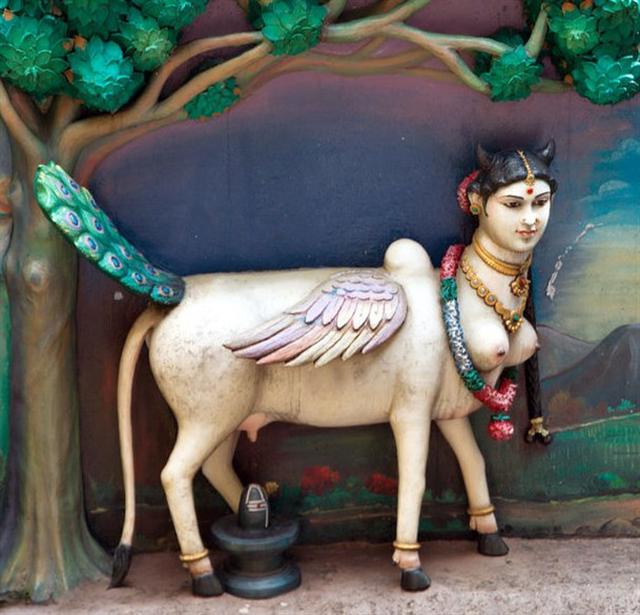
|





















